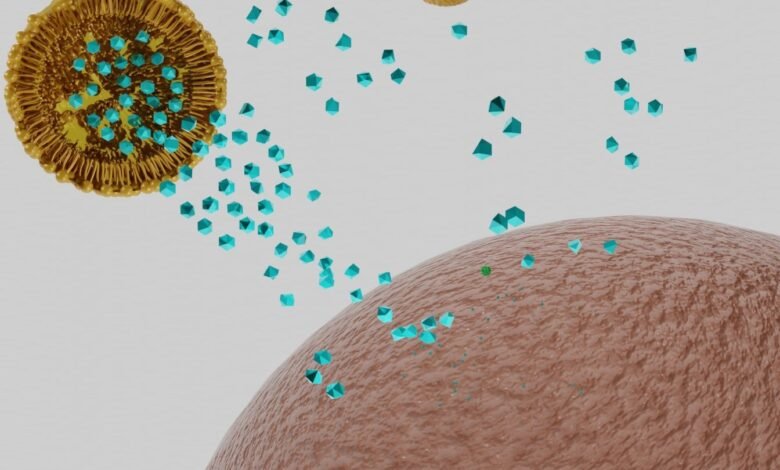Who are the leading innovators in nanoparticles for drug delivery for the pharmaceutical industry?

The pharmaceutical industry continues to be a hotbed of innovation, with activity driven by the evolution of new treatment paradigms, and the gravity of unmet needs, as well as the growing importance of technologies such as pharmacogenomics, digital therapeutics, and artificial intelligence. In the last three years alone, there have been over 633,000 patents filed and granted in the pharmaceutical industry, according to GlobalData’s report on Key innovation: Leading companies in nanoparticles for drug delivery.
However, not all innovations are equal and nor do they follow a constant upward trend. Instead, their evolution takes the form of an S-shaped curve that reflects their typical lifecycle from early emergence to accelerating adoption, before finally stabilising and reaching maturity.
Identifying where a particular innovation is on this journey, especially those that are in the emerging and accelerating stages, is essential for understanding their current level of adoption and the likely future trajectory and impact they will have.
110 innovations will shape the pharmaceutical industry
According to GlobalData’s Technology Foresights, which plots the S-curve for the pharmaceutical industry using innovation intensity models built on over 756,000 patents, there are 110 innovation areas that will shape the future of the industry.
Within the emerging innovation stage, automated lab analysers, tissue culturing automation, and clean room robots are disruptive technologies that are in the early stages of application and should be tracked closely. Nanoparticles for drug delivery, microneedles for transdermal drug delivery, and programmable sterilisation are some of the accelerating innovation areas, where adoption has been steadily increasing. Among maturing innovation areas are controlled drug release devices, and DNA nanoprobes, which are now well established in the industry.
Innovation S-curve for Internet of Things in the pharmaceutical industry
Nanoparticles for drug delivery is a key innovation
A nanoparticle is a small particle ranging in size from 1 to 100 nanometres. Nanoparticles are used as novel drug delivery systems to deliver drugs to specific tissues and to provide controlled release therapy. With the targeted and sustained delivery of drugs, patients are more likely to comply with less frequent dosing and experience less drug toxicity. Metal nanoparticles, liposomes, nanocrystals, and polymeric nanoparticles are the most common types of nanoparticles. Transporting insoluble drugs into the blood through stable colloidal systems and controlled drug release is one of the major advantages of this.
GlobalData’s analysis also uncovers the companies at the forefront of each innovation area and assesses the potential reach and impact of their patenting activity across different applications and geographies. According to GlobalData, there are 40+ companies, spanning technology vendors, established pharmaceutical companies, and up-and-coming start-ups engaged in the development and application of nanoparticles for drug delivery.
Key players in nanoparticles for drug delivery – a disruptive innovation in the pharmaceutical industry
‘Application diversity’ measures the number of different applications identified for each relevant patent and broadly splits companies into either ‘niche’ or ‘diversified’ innovators.
‘Geographic reach’ refers to the number of different countries each relevant patent is registered in and reflects the breadth of geographic application intended, ranging from ‘global’ to ‘local’.
Bristol-Myers Squibb is the leading patent filer in nanoparticles for drug delivery. BMS has a market cap of $154.16bn and is primarily focused on oncology, haematology, cardiovascular, immunology, and fibrotic therapeutic projects. In 2005, the FDA approved Bristol-Myers Squibb’s Abraxane, a PX albumin-bound nanoparticle formulation with 130nm particles, for treating metastatic breast cancer. Ipsen SA and Insmed Inc are the other key patent filers in nanoparticles for drug delivery
In terms of application diversity, Laila Pharmaceuticals is the top company, followed by Yuhan and Spanish National Research Council. By means of geographic reach, Children’s Hospital Los Angeles held the top position. Spanish National Research Council and Bristol-Myers Squibb stand in the second and third positions, respectively. To further understand the key themes and technologies disrupting the pharmaceutical industry, access GlobalData’s latest thematic research report on Internet of Things (IoT) in Healthcare – Thematic Research.
Source link
#leading #innovators #nanoparticles #drug #delivery #pharmaceutical #industry